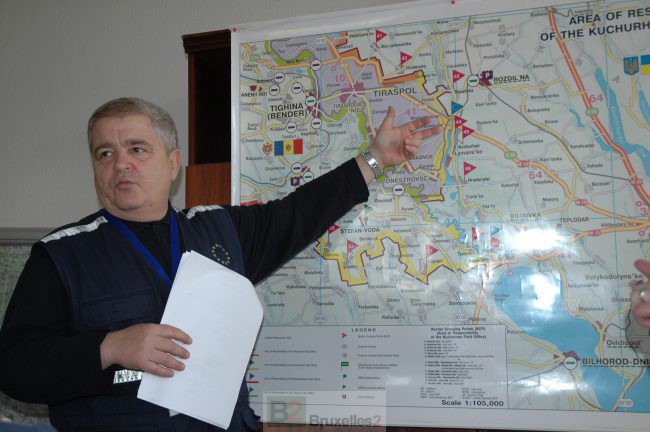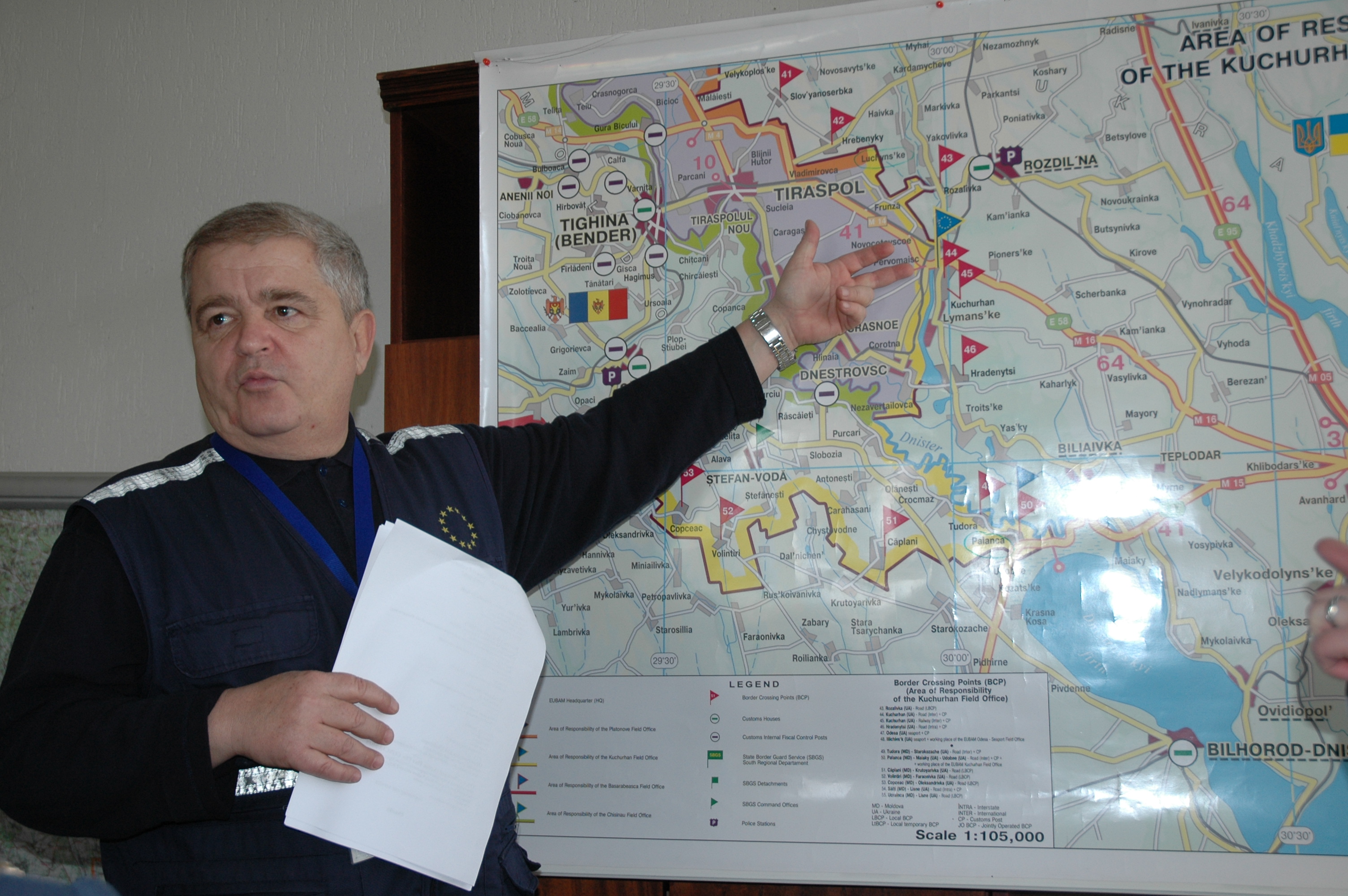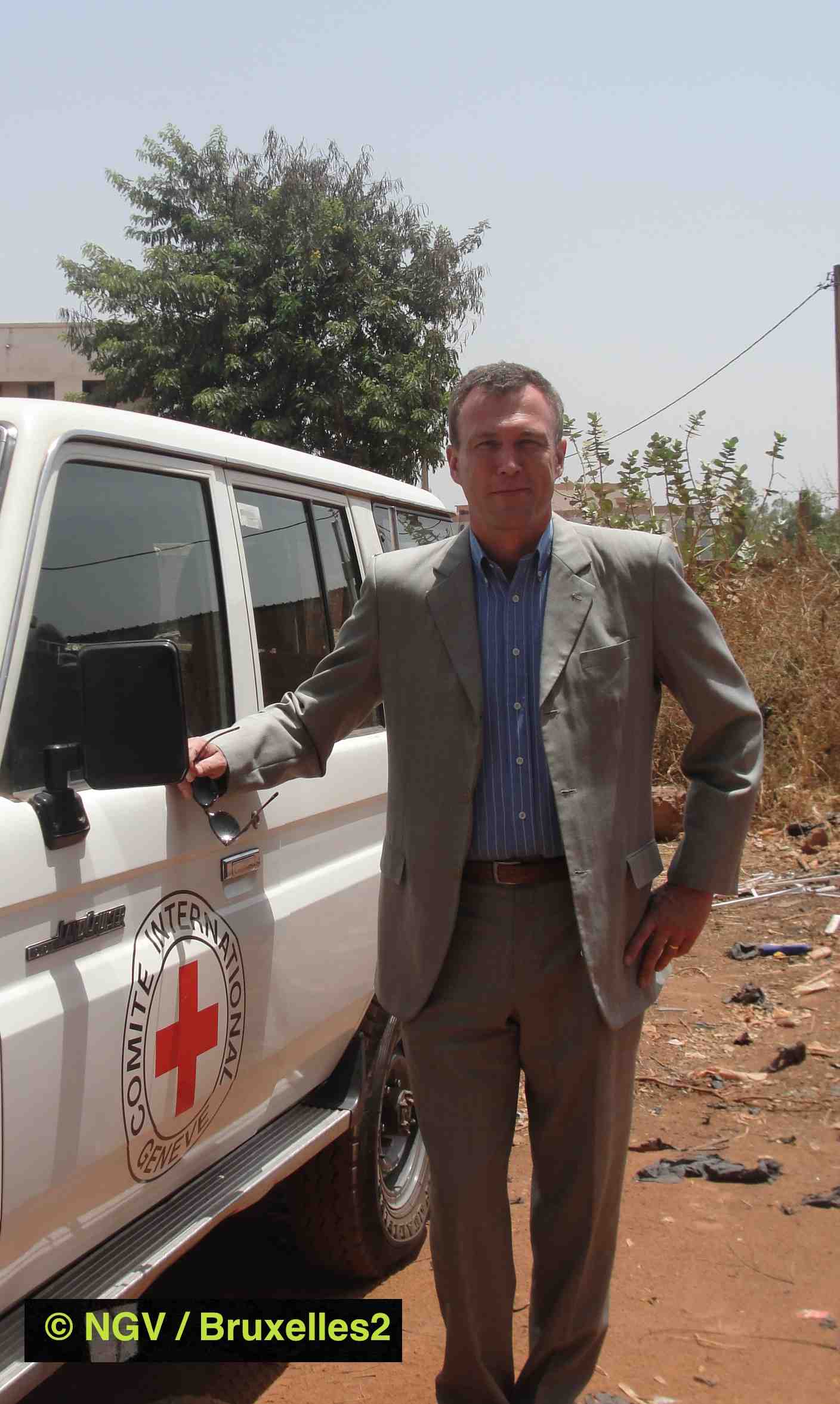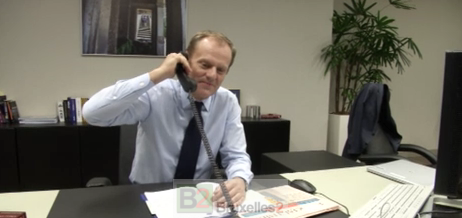At the edge of Europe with European customs officers

(BRUSSELS2 to Palanca) The Palanca border, between Moldova and Ukraine. A space of no man's land, wedged between two parts of Ukraine. But there are two posts: a Ukrainian post and, two or three kilometers further on, a Moldavian post.
Result: a black hole, small of course, but a flaw in border control. We leave Ukraine with a piece of transit paper valid for a few minutes before finding another part of Ukraine a few kilometers further. Finally normally... Because nothing prevents turn left and end up in Moldova says a connoisseur. Despite all their recommendations, the Europeans have not yet succeeded in obtaining a joint checkpoint. " It reminds me of my beginnings, when I was on the border between Italy and France (the Schengen agreement was not then in force) when we "quarreled" with our Italian counterparts Says, smiling, Jean-Pierre Albarelli, a former Air and Border Police (French), responsible for the area. " We are not there to replace the customs of these two countries. It remains their responsibility says Udo Brukholder, Deputy Director of EUBAM.

The past weighs
" This is not obvious. We are moving from a concept of soldiers who guard the border by preventing the passage to civilian customs officers who must facilitate traffic, by detecting the "bad ones", therefore by using more cooperation and profiling explains J.-P. Albarelli. " Ukrainians and Moldovans are good, seasoned professionals. But there is, for example, an obsession with secrecy, a “secret mania”. Some information is sometimes difficult to obtain, others are almost top secret, even the simplest, such as a simple patrol plan for example ". The first European experts were also taken for spies. And the first times of working together were not easy.
Over time, however...
The advice, recommendations and experience of European customs officers are appreciated and " generally followed ". It takes a bit of time for the chain of command to follow. But the leaders of the two countries regularly sit around the same table to solve the various problems. "It undeniably facilitates the reports" underlines Albarelli. The training of personnel, the use of modern methods - the targeting of arrested persons - are becoming part of the customs, little by little.
However, there are still many structural shortcomings.
Local customs officers are therefore not used to working undercover. Only former KGB personnel use such methods. But he does not work at the borders. Smuggling is also a “national sport”. Smuggling facilitated by the absence of precise demarcation of borders, explains Ferenc Banfi, the head of Eubam. " The criminals caught in the act are well organized. Helped by good lawyers, they have a good chance in court, to defend themselves for having crossed the border ". As for the fight against corruption, "Zero tolerance" is sometimes appreciated in a "flexible" way (1). So when several Ukrainian agents were suspected, the authorities replied to Eubam that the agents had been “neutralized”. Which means, simply moved to another place...
A slightly porous border
Daily work is made all the more difficult by the situation in Transnistria. Eubam avoids any official contact to avoid being trapped by the secessionist authorities. But it seems that part of the transit between Ukraine goes through this self-proclaimed republic. However, on a whole part of the border, the Ukrainian customs officers are alone, without Moldovan counterparts. And the " traffic in certain goods seems to benefit from solid support on both sides of the border confides a customs officer. The chicken traffic is telling. In Ukraine, it takes 900 euros per ton, 140 euros via Transnistria. A difference of almost 700 euros is very tempting! In view of the statistics, the Transnistrians have thus become the biggest chicken eaters in Europe (10 times more than an average European)! But the case cost 42 million euros to the Ukrainian budget.
Transnistria hub of all possible traffic
Suspicion has long weighed on this long strip of land, Transnistria, of being a hub for all possible trafficking: drugs, weapons, human beings... Eastern Moldova - its Transnistrian part - was indeed specialized, under the Soviet Union, in the production of weapons, mainly light weapons (mortars, Kalashnikovs) and parts of missiles. Eleven facilities for producing weapons in this way have been identified. And, according to the specialists, there remained 20 tons of ammunition whose use or destination is not well known. But Eubam has never detected arms trafficking. And the OSCE – present in the region – has no proof of what could have been exported. However, it remains very difficult to control what is present. Ten missiles have thus mysteriously disappeared. Transnistrians claimed it was "water damage". But there has never been any tangible proof of this “disappearance”.
Ammunition depots beyond international control
While there is freedom of movement for OSCE international monitors, they also cannot freely approach munitions depots, for example. These are closely monitored. And unannounced inspections are not possible. The last check , therefore took place in 2006. And since then, the Osce no longer wants to go there so as not to give a guarantee to a contested regime. “Talking about arms trafficking is more like a fantasy – stresses a European customs officer – there are a lot of fantasies about Moldova. Personally, I did not see any weapons but chickens yes” he quips.
Cigarette trafficking: a local virtue
On the other hand, it seems certain that the territory has focused on certain lucrative markets, such as cigarettes. To see the price, derisory compared to other Europeans, displayed in the shops, between 2 and 7 rubles for Western brands (Winston, Lucky Strike, Camel), or 15 to 50 cents -, there is enough to fuel traffic. There are indeed illegal cigarette factories in Tiraspol. A company having gone bankrupt in Bulgaria, the Transnistrians recovered the machines and the labor force. The cigarettes then flow from Ukraine to the EU (in cigarette seizures, this country ranks second).
A region at the confluence of all types of traffic
In fact, the whole region – Transnistria, Moldova and Ukraine – finds itself at the confluence of the new routes chosen by the smugglers. “The drugs which mainly come from Afghanistan – but also from Iran – normally arrived towards Macedonia, Serbia, Kosovo, Montenegro (Balkan route) “says a customs officer. There the Kosovar and Serbian mafias "shared" the markets. Since the police have increased their activity in this region - partly with European encouragement and funding -, " the criminals set up other routes, deemed safer for them ". One passes through the North (Azerbaijan, Georgia, Russia, Ukraine, CE), the other through the South (Georgia, Cyprus, Odessa, Russia and the CE). And the modus operandi traffickers are becoming more and more sophisticated. "Criminals are very intelligent and use all the technologies" high tech "says a European customs officer. Thus " cocaine is sometimes introduced inside fruits (one seizure of this type took place in Odessa) or dissolved in wine bottles (one seizure took place in Chisinau). A new technique, even more subtle, even consists in impregnating fabrics (t-shirts, carpets) in cocaine - in other words invisible - then then by a special treatment, to recover the raw material... »
(Nicolas Gros-Verheyde)
(1) According to the 2007 barometer of the NGO Transparency International, 30% of people questioned in Moldova say they have paid a bribe for an administrative service.
The continuation of the report
Eubam Ukraine-Moldova. Ferenc Banfi: “A role in stabilizing the region”


